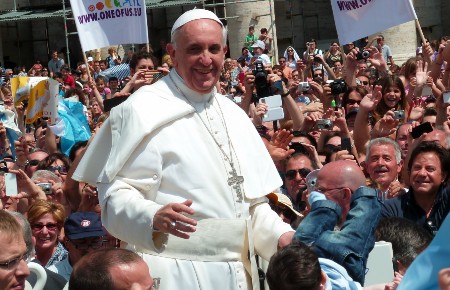We ask you, humbly: don't scroll away.
Hi readers, it seems you use Catholic Online a lot; that's great! It's a little awkward to ask, but we need your help. If you have already donated, we sincerely thank you. We're not salespeople, but we depend on donations averaging $14.76 and fewer than 1% of readers give. If you donate just $5.00, the price of your coffee, Catholic Online School could keep thriving. Thank you.Help Now >
Jemez Pueblo
FREE Catholic Classes
An Indian pueblo situated upon the north bank of the river of the same name about twenty miles north-west of Bernalillo, New Mexico. Its inhabitants, of Tanoan Shoshonean stock, are all that remain of an important tribe occupying some ten villages in the same region when first known to the Spaniards in 1541. The name comes from their Keran neighbours. They themselves call their town Walatoa, "Bear Village". The Jemez country was first entered by Coronado in 1541, and was visited later by Espejo (1583) and Oñate (1598). Through the efforts of the Franciscan Father Martín de Arvide the tribe was induced, about 1618, to concentrate in two villages, in each of which a mission was established. Somewhat later one of these was abandoned for a new station, San Juan (de los Jemez). Twice the Jemez, in connection with some other Indians, conspired against the Spaniards, but the risings were speedily suppressed, until the outbreak of the general Pueblo rebellion in 1680, when the Jemez rose in both villages, killing one of the missionaries. At last, in 1694, General Vargas stormed their pueblo , killing nearly 100 of the inhabitants and carrying off nearly 400 prisoners. The village was also destroyed, reducing the tribe to the single pueblo of San Diego. In 1696 they again revolted, killing the resident Franciscan missionary, and fled west to the Navaho. After some years of exile they returned and built the pueblo in which they now reside. In 1728 and 1780-1 they suffered heavily from smallpox. They number now about 500, including the remnant of the kindred Pecos tribe. Both a government and a Franciscan day-school are kept among them. In culture and general characteristics the Jemez resemble the other Pueblos.









 Daily Readings for Saturday, April 27, 2024
Daily Readings for Saturday, April 27, 2024 St. Zita: Saint of the Day for Saturday, April 27, 2024
St. Zita: Saint of the Day for Saturday, April 27, 2024 Prayer for the Dead # 2: Prayer of the Day for Saturday, April 27, 2024
Prayer for the Dead # 2: Prayer of the Day for Saturday, April 27, 2024

